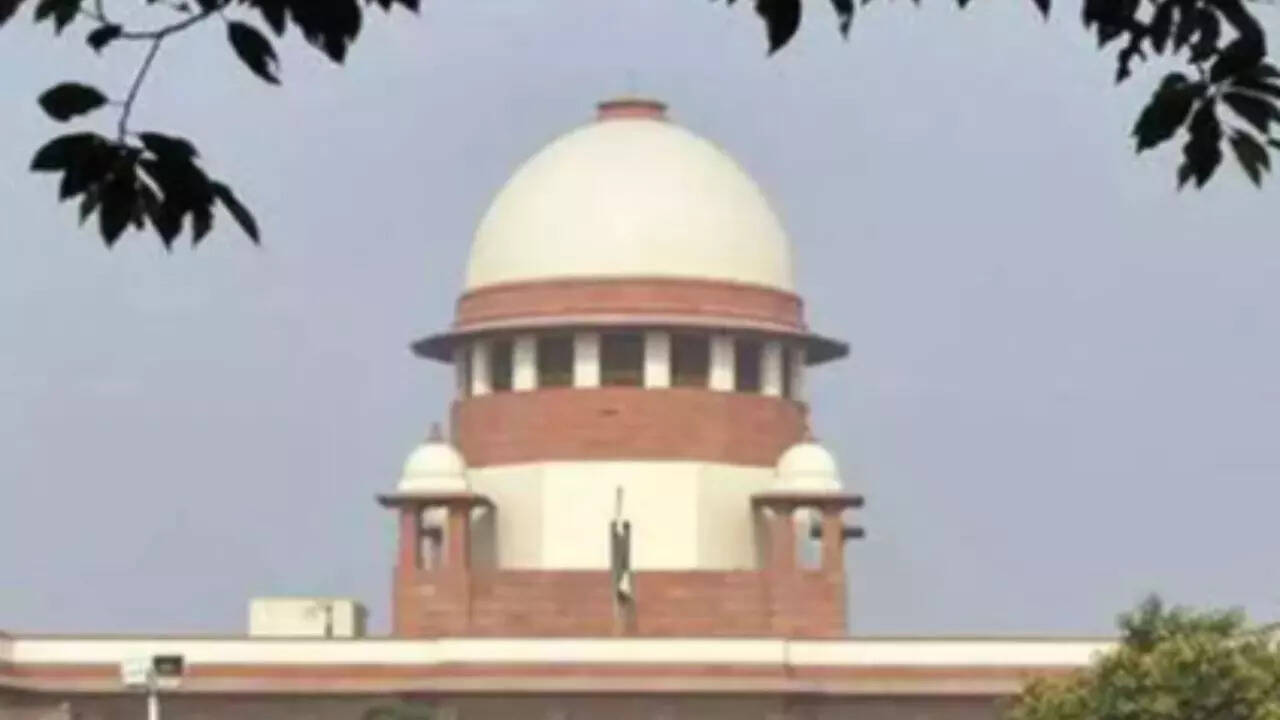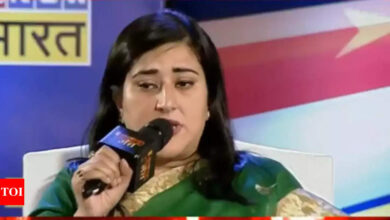India
Supreme Court celebrates 50 years of ‘basic structure doctrine’ | India News

[ad_1]
NEW DELHI: Celebrating the 50th anniversary of its landmark ‘Kesavananda Bharati’ judgment barring the Parliament from amending the basic structure of the Constitution, including fundamental rights, the Supreme Court on Monday uploaded on its website the entire records of the watershed ruling along with the 11 different opinions given by the members of the SC’s largest-ever 13-judge bench.
The bench, comprising then CJI SM Sikri and Justices JM Shelat, KS Hegde, AN Grover, AN Ray, PJ Reddy, DG Palekar, HR Khanna, KK Mathew, MH Beg, SN Dwivedi, BK Mukherjea and YV Chandrachud, by a slenderest 7-6 margin had ruled that under Article 368 of the Constitution “the power to amend does not include the power to alter the basic structure or framework of the Constitution so as to change its identity”.
The ‘basic structure doctrine’ was agreed to by CJI Sikri, and Justices Shelat, Hegde, Grover, Khanna, Reddy and Mukherjea. Those who disagreed were Justices Ray, Palekar, Mathew, Beg, Dwivedi and Chandrachud. While Justice Mathew’s son K M Joseph is a sitting SC judge, Justice Chanrachud’s son is the present CJI. In contrast to their fathers’ views in the Kesavananda case, sons of the two former judges fastidiously imbibe the basic structure in their approach to constitutional cases.
Of the judges who propounded the ‘basic structure’ doctrine, few changed sides when it came to curtailing Parliament’s amending powers. Justices Ray, Palekar, Khanna, Mathew, Beg, Dwivedi and Chandrachud had ruled that “there are no inherent or implied limitations on the power to amend under Article 368”.
This ‘basic structure’ ruling impeded the decisions of the Indira Gandhi government, which a day after the pronouncement of the verdict wreaked vengeance on April 25, 1973 by announcing appointment of Justice Ray as the successor to Justice Sikri, in supersession of Justices Shelat, Hegde and Grover. The three superseded judges resigned in protest.
Justice Ray reaped the reward for loyalty and was sworn in as CJI on April 26, 1973.
During the Emergency, Justice Khanna on April 28, 1976 delivered the lone dissent in ADM Jabalpur case and ruled that fundamental right to life cannot be suspended under any circumstance, not even emergency. His ruling dwarfed the majority ruling by the other four — CJI A N Ray , and Justices Beg, Chandrachud and P N Bhagwati — toeing the government line that all fundamental rights remain suspended during Emergency.
The Indira Gandhi government wreaked vengeance yet again by superseding Justice Khanna and appointing Justice Beg as CJI. Justice Khanna resigned. More than 40 years later, Justice DY Chandrachud overruled ADM Jabalpur as a bad law.
CJI DY Chandrachud on Monday announced that the entire case records of Kesavananda Bharati judgment, including written submissions of the lawyers, the lead one being the legendary Nani Palkhivala, and documents submitted by parties, have been uploaded on a special page created on SC website.
The CJI also inaugurated a new judges’ library in the SC, to which 2.4 lakh of 3.8 lakh books and reference materials have been shifted. He also inaugurated Soli Sorabjee’s Bibliotheca by unveiling his portrait in the new library.
The bench, comprising then CJI SM Sikri and Justices JM Shelat, KS Hegde, AN Grover, AN Ray, PJ Reddy, DG Palekar, HR Khanna, KK Mathew, MH Beg, SN Dwivedi, BK Mukherjea and YV Chandrachud, by a slenderest 7-6 margin had ruled that under Article 368 of the Constitution “the power to amend does not include the power to alter the basic structure or framework of the Constitution so as to change its identity”.
The ‘basic structure doctrine’ was agreed to by CJI Sikri, and Justices Shelat, Hegde, Grover, Khanna, Reddy and Mukherjea. Those who disagreed were Justices Ray, Palekar, Mathew, Beg, Dwivedi and Chandrachud. While Justice Mathew’s son K M Joseph is a sitting SC judge, Justice Chanrachud’s son is the present CJI. In contrast to their fathers’ views in the Kesavananda case, sons of the two former judges fastidiously imbibe the basic structure in their approach to constitutional cases.
Of the judges who propounded the ‘basic structure’ doctrine, few changed sides when it came to curtailing Parliament’s amending powers. Justices Ray, Palekar, Khanna, Mathew, Beg, Dwivedi and Chandrachud had ruled that “there are no inherent or implied limitations on the power to amend under Article 368”.
This ‘basic structure’ ruling impeded the decisions of the Indira Gandhi government, which a day after the pronouncement of the verdict wreaked vengeance on April 25, 1973 by announcing appointment of Justice Ray as the successor to Justice Sikri, in supersession of Justices Shelat, Hegde and Grover. The three superseded judges resigned in protest.
Justice Ray reaped the reward for loyalty and was sworn in as CJI on April 26, 1973.
During the Emergency, Justice Khanna on April 28, 1976 delivered the lone dissent in ADM Jabalpur case and ruled that fundamental right to life cannot be suspended under any circumstance, not even emergency. His ruling dwarfed the majority ruling by the other four — CJI A N Ray , and Justices Beg, Chandrachud and P N Bhagwati — toeing the government line that all fundamental rights remain suspended during Emergency.
The Indira Gandhi government wreaked vengeance yet again by superseding Justice Khanna and appointing Justice Beg as CJI. Justice Khanna resigned. More than 40 years later, Justice DY Chandrachud overruled ADM Jabalpur as a bad law.
CJI DY Chandrachud on Monday announced that the entire case records of Kesavananda Bharati judgment, including written submissions of the lawyers, the lead one being the legendary Nani Palkhivala, and documents submitted by parties, have been uploaded on a special page created on SC website.
The CJI also inaugurated a new judges’ library in the SC, to which 2.4 lakh of 3.8 lakh books and reference materials have been shifted. He also inaugurated Soli Sorabjee’s Bibliotheca by unveiling his portrait in the new library.
#Supreme #Court #celebrates #years #basic #structure #doctrine #India #News






